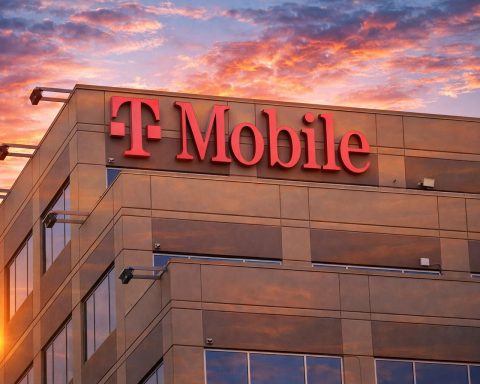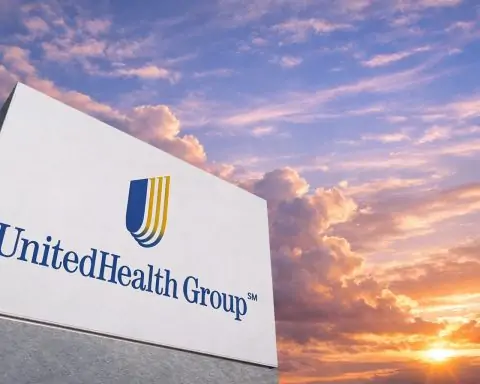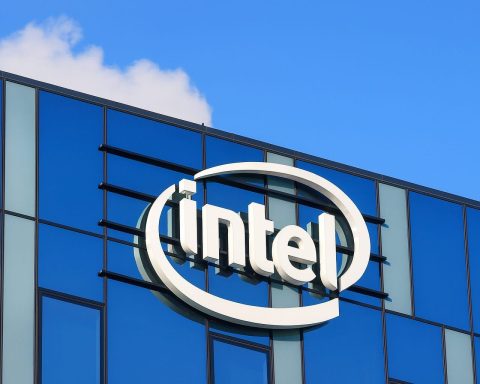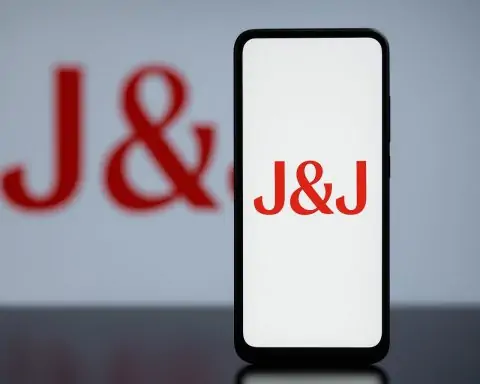- Drones over 150 g must be registered with Rosaviatsia within 10 days of import or purchase, or face fines.
- Registrants must provide drone specs (mass, serial number, manufacturer) and owner ID to obtain a unique UAV registration number.
- Liability insurance is mandatory for all UAV owners in Russia.
- Drones up to 30 kg must be registered; toys under 0.15 kg are exempt.
- Commercial drone operators must hold a Rosaviatsia pilot certificate and obtain a separate aerial filming permit from the Transport Ministry.
- In March 2022, the weight threshold was lowered from 250 g to 150 g to capture more small drones.
- In March 2024, Class H airspace (0–150 m) was created for UAVs up to 30 kg; daylight, VLOS flights under 150 m do not require a flight plan, with plans filed via mintrans.gov.ru.
- A national drone strategy through 2030 aims to develop a civilian drone industry in agriculture, delivery, mapping and energy with state-backed production and training.
- As of May 2023, Moscow Mayor Sergei Sobyanin banned all private drone launches inside MKAD; only government or emergency drones may fly without clearance.
- No-fly zones include the Kremlin, Red Square, government buildings, airports (5 km around runways), and military facilities, with violations potentially leading to fines and interception or shooting down.
Overview of Russia’s UAV Regulations
Russia’s civil drone rules have tightened drastically. All drones above 150 g must be registered with the Federal Air Transport Agency (Rosaviatsia) [1]. Registration (via the state e-services portal or direct Rosaviatsia site) must be done within 10 days of import or purchase; failure invites fines and grounds to ground your drone [2] [3]. Owners must provide detailed specs (mass, serial number, manufacturer, owner ID, etc.) to obtain a unique UAV registration number [4]. Federal law now also requires mandatory liability insurance for all UAV owners (akin to auto OSAGO) [5]. In short, anyone (Russian or foreign) flying drones >150 g for any purpose must register it, label it with its ID and carry liability insurance.
Russia classifies drones into weight categories in law: “room-sized” toys under 0.15 kg have no registration requirement [6], but anything heavier (up to 30 kg) must be registered [7]. Even foreign visitors must register their drones unless it’s used only in model aircraft competitions [8]. (Those purely participating in aeromodelling contests are exempt; otherwise foreign drones follow the same rules [9].) In practice, all civilian UAVs (recreational or commercial) need this Rosaviatsia registration. Commercial operators also require an operator certificate (pilot license) from Rosaviatsia, plus a special permit for aerial filming – a stringent “videographer’s license” issued by the Transport Ministry [10].
In March 2022 the government lowered the weight threshold from 250 g to 150 g to capture more small drones [11]. Recent developments (March 2024) further liberalized some rules: a new “Class H” airspace (0–150 m) was created for UAVs up to 30 kg, no flight plan is needed for VLOS flights under 150 m, and operators can file plans via a new digital platform [12] [13]. A national drone strategy (to 2030) has been adopted, aiming to create a major civilian drone industry (in Moscow and nationwide) in agriculture, delivery, mapping and energy, with state-backed production and training programs [14] [15]. In short, the government promotes drone tech in the economy, but regulates it heavily in practice.
Moscow’s Strict Drone Ban and No-Fly Zone
As of May 2023, Mayor Sobyanin banned all private drone launches inside the Moscow Ring Road (MKAD) [16] [17]. By the mayor’s decree, “with effect from today, launch of UAVs in the city of Moscow is prohibited, except UAVs used by state authorities” [18]. In other words, Moscow is essentially a drone-free zone for the public – only government or emergency services drones may fly without special clearance [19] [20]. (This rule was tightened following a Kremlin drone attack in May 2023.)
If you need to fly outside MKAD, even in Greater Moscow, strict altitude and location limits apply (see below). But inside MKAD, even toy drones cannot take off without exceptional permission. Violating the Moscow ban triggers an administrative fine (30–50 thousand rubles for individuals [21]) or criminal charges if judged a security threat [22] [23]. The city’s Operational Headquarters (set up under a presidential decree) actively prosecutes illegal flights, and Moscow police openly warn they will “intercept or even shoot down any unauthorized UAV” [24] [25]. In fact, the Moscow police bulletin bluntly states: “Moscow is a no-fly zone for all aircraft. Any unauthorized launch entails liability.” [26]. Practical advice: do not fly a drone in central Moscow.
Key Moscow zones are explicitly off-limits: flying over the Kremlin, Red Square, government buildings, military installations, airports, and public events (e.g. sports/marathons) is forbidden [27] [28]. (Even overpasses or cranes count as “near buildings” and are banned [29].) The Kremlin and Red Square are specifically noted in multiple sources as permanent drone flight bans. Also note: near Moscow’s airports and helipads (and 5 km around them) flights are prohibited [30], and every area of special use (military zones, border zones, power plants, embassies, etc.) is no-fly [31] [32]. The city government provides an interactive map (“AVTM Center” or similar digital platforms) to check permitted zones. In short, stay far from security/critical sites when flying.
Flight and Operational Rules
Even outside no-fly zones, drone pilots must obey stringent conditions. By federal rule, all civilian UAV flights must be in daylight and within visual line-of-sight of the pilot [33] [34]. Maximum altitude is generally 150 meters above ground or water [35] [36]. (Above 150 m, you need special clearances.) Importantly, the March 2024 updates allow flights over populated areas up to 150 m in daylight without filing a flight plan for drones up to 30 kg [37] [38] – a big change from earlier, when all flights needed advance notice. However, even under 150 m you still cannot enter no-fly zones [39].
Other operational limits: fixed-wing UAVs may need a “flight dispatch” plan for complex missions; night-flying is essentially barred. Agricultural drones have special allowances (e.g. 5 km from airfields and 2 km from landing pads with minimal altitudes) [40]. Pilots must check current restrictions: Rosaviatsia (or local ATC) may issue temporary bans for events or hazards. Moscow authorities specifically require special government permission for any flight inside MKAD [41], a permission almost never granted to civilians.
All drones must bear their registration ID visibly. Although Russia has not implemented a “remote ID” broadcast system yet, operators are expected to carry documentation and be identifiable. Notably, Rosaviatsia and Mintrans websites now provide a “UTM” app (the “Nebosvod” system) for submitting flight plans and checking airspace. Encryption jamming: be aware that GPS or communications can be jammed in central Moscow by security forces; even authorized flights can lose GPS near the Kremlin.
No-Fly Zones and Safety Restrictions
Russian law lists extensive no-fly categories. Restrictions focus on security and privacy. You cannot fly over:
- Government and military sites: Ministry/power plants, rail/RZD infrastructure, nuclear and border facilities, foreign embassies, VIP convoys [42].
- Crowds & events: sports stadiums, concerts, large gatherings or demonstrations [43] [44].
- Transport hubs: airports, adjacent airfields, approach corridors (up to 5 km around runways) [45].
- Protected zones: state dachas, presidential offices, security cordons [46].
- Near people’s private property: filming of private life or property without consent is subject to data/privacy laws [47] [48].
These overlapping layers mean most of central Moscow is effectively off-limits, and caution is urged even in empty suburban areas. The Aeronavigation Information Center publishes maps of restricted/conditional areas. Ignoring these rules risks immediate shutdown by police/drone pilots, plus hefty fines.
To plan legally, one must file a request with ATC for any flight beyond simple VLOS paths. Per one legal guide, drone pilots should “notify local air traffic control 24 h before takeoff, then report readiness 2 h prior, and report during/after flight” [49]. (In practice these rules are onerous and often overlooked, but enforcement can be strict.) Summary: Stay under 150 m, keep direct sight, avoid restricted areas (use official maps), and get local clearance for anything complex.
Registration, Certification and Insurance
All categories – recreational, commercial, journalism, or enterprise – fall under these laws. Hobbyists face the same registration rules as businesses. Drones over 150 g must be logged in Rosaviatsia’s registry [50]. Smaller toy drones (sub-150 g) are exempt [51]. Registration is free but strictly enforced: failure means you cannot legally operate. Registration is done online: upload a photo of the drone and info about its specs and owner [52]. A separate operator (pilot) license from Rosaviatsia is only required for commercial use or flights over 30 kg; hobby use and small drones do not need a government pilot certificate.
Foreign pilots should note that all drones entering Russia must be declared and registered as above. Only model aircraft used strictly in competition are exempt [53]. It’s wise to carry your drone’s paperwork and local ID (visa/passport). Also, due to sanctions, many popular foreign drones (DJI, Autel) have been crippled or blocked from Russian sales [54]. The government plans to ban state agencies from buying any foreign UAVs by end-2024 [55], so domestic brands will dominate official use. In short, foreign operators will find no loopholes: abide by the same regs or don’t fly.
Importantly, insurance is now mandatory. The Transport Ministry confirms that by law “drone insurance is compulsory for UAV owners” [56] (per a Putin directive). A draft law on compulsory drone liability insurance (akin to car OSAGO) is in the works [57]. In practice, policies are just emerging; operators should obtain cover with at least the minimal government-recommended limits (currently ~6,000 rub per kg of drone mass, or higher as soon as the market matures [58]). This insurance covers third-party harm – an essential safeguard since penalties for accidents can be severe.
Privacy, Data and Filming Regulations
Russian law also protects individual privacy and state secrets from drone misuse. You may not film people on private property without consent or record classified installations [59] [60]. Data protection rules (Law 152-FZ) mean that any personal images captured count as “personal data” and cannot be publicly disseminated without permission. Some sources note that even journalists must get clearance: e.g., filming military sites or private dwellings requires a special filming permit from military/intelligence authorities [61]. In practice, any photographic data considered sensitive (near police, border, military) can be seized by authorities. Always assume no photos in Moscow’s central zones.
Additionally, anti-terror laws and war-time decrees have tightened surveillance: Soviet-era privacy expectations aren’t the same in active defense mode. Moskva’s law enforcement reminds us that unmanned filming over strategic sites may lead to criminal charges (up to 7 years) under Article 271.1 of the Criminal Code. Summary: “Don’t fly over or film anything that could be construed as a security object or invade personal privacy” [62] [63].
Enforcement and Penalties
Violating UAV rules in Russia carries heavy penalties. Administratively, flying in restricted airspace or without registration is punishable by 30,000–50,000 rubles fines for individuals [64] [65] (up to 300–500k for companies). Additional violations (e.g. flying “near people” unsafely) add further fines [66]. The worst cases – causing accidents or flying near critical sites – are now being treated under anti-terror and air-safety laws: criminal charges can bring multi-year prison terms [67] [68]. Notably, Moscow police have publicly stated that unsafe drone flights will result in confiscation and possible use of force (shoot-down or even live ammunition) to neutralize the threat [69].
In 2023-24, dozens of individuals faced fines or detentions for drone flights in banned areas [70]. The government set up special enforcement teams (in the Central Federal District, including Moscow) to crack down on illegal UAV use [71]. Municipal police and national guard patrol drones are on the lookout; there is at least one published case of a journalist fined 32,000 rub for a 150 m flight [72]. In short: assume harsh enforcement, zero tolerance in key areas [73] [74].
Trends and Recent Changes (2023–25)
Several recent developments shape the current situation. In 2023, under Ukraine war pressures, most Russian regions (68 by Dec. 2023) banned private drones. Moscow’s May 2023 ban followed similar moves nationwide, echoing a 2022 presidential decree. Meanwhile, in April–June 2023, the government moved to encourage civilian drone use in approved ways: new rules effective March 1, 2024 eased flight planning (see above) [75]. Also in mid-2023, a “Strategy for UAV development through 2030” was signed [76] to boost drone tech in agriculture, mapping and logistics. This shows a two-track policy: strictly lock down recreational UAV use, while cultivating a state-led drone industry.
In 2025, further modernization arrived. Most notably, in August 2025 Russia created Airspace Class H – a low-altitude layer (0–150 m) exclusively for drones ≤30 kg [77]. In Class H, flights are simplified: no flight plan needed for VLOS flights under 150 m [78]. This officially recognizes drones as “regular” airspace users at low altitude. Development also continued on IDs/UTM systems and a full OSAGO-style insurance law [79].
Privacy concerns and technology: Law enforcement worries about drones peering into homes or spying on facilities. Russia already has strict personal data laws and the SORM surveillance system. There’s talk of mandatory real-time drone ID and geo-fencing software for future hardware [80]. However, for now, operators are largely on the hook for not breaking rules themselves. Citizens are reminded they can report suspicious drones to police.
Finally, international context: Western sanctions and Russian responses mean foreign drones are viewed skeptically. As noted, imports of DJI/Autel gear are blocked [81]. Some analysts warn traveling with a drone could raise questions at customs or border posts. In practice, non-Russian operators have no special privileges: follow the same rules or risk seizure.
Summary for Drone Pilots in Moscow (2025)
- No recreational flights in Moscow city. Private UAV launches inside MKAD are banned, period [82] [83].
- Register and insure your drone. Any UAV >150 g needs Rosaviatsia registration and civil liability insurance [84] [85].
- Stay below 150 m and in sight. Daylight-only, VLOS flights under 150 m are permitted in “green” areas (outside no-fly zones) [86] [87].
- Avoid all no-fly zones. This includes Kremlin, Red Square, stadiums, government sites, airports (5 km buffer), military facilities, and any site under protection [88] [89].
- Submit plans and get permission if needed. For city or complex flights, you must file a flight plan with air traffic control or get local authority approval. Unauthorized flights will be stopped.
- Penalties are severe. Fines start at ~30,000 rubles and go up. Police may shoot down intruding drones [90]. Repeat or dangerous violations can lead to criminal charges [91] [92].
- Only state drones allowed inside MKAD. Government and emergency UAVs fly with special clearance [93] [94]; civilians get no exceptions.
Bottom line: In 2025 Moscow is hostile territory for hobby drones. Unless you’re an authorized service (e.g. police, fire, disaster relief), you must keep your UAV grounded in the city. If you fly elsewhere in Russia, register your drone, carry insurance, obey altitude/visibility rules and steer far clear of prohibited areas. Always reference official sources (Rosaviatsia, Минтранс, МВД) for updates.
Sources: Official announcements and news reports from Rosaviatsia and the Russian Transport Ministry [95] [96]; Moscow mayor’s office and Interior Ministry statements [97] [98]; Russian media coverage (RBC, TASS, Lenta, etc.) [99] [100] [101]; and expert analyses of Russian UAV law [102] [103].
References
1. www.kp.ru, 2. www.kp.ru, 3. dronology.ru, 4. www.kp.ru, 5. www.rbc.ru, 6. www.kp.ru, 7. www.kp.ru, 8. www.kp.ru, 9. www.kp.ru, 10. mmdc.ru, 11. www.kp.ru, 12. mintrans.gov.ru, 13. mintrans.gov.ru, 14. xn--90aivcdt6dxbc.xn--p1ai, 15. xn--90aivcdt6dxbc.xn--p1ai, 16. ria.ru, 17. www.rbc.ru, 18. ria.ru, 19. ria.ru, 20. www.rbc.ru, 21. www.rbc.ru, 22. meduza.io, 23. www.rbc.ru, 24. www.rbc.ru, 25. www.rbc.ru, 26. www.rbc.ru, 27. mmdc.ru, 28. mmdc.ru, 29. mmdc.ru, 30. mmdc.ru, 31. mmdc.ru, 32. mmdc.ru, 33. xn--90aivcdt6dxbc.xn--p1ai, 34. mintrans.gov.ru, 35. xn--90aivcdt6dxbc.xn--p1ai, 36. mintrans.gov.ru, 37. mintrans.gov.ru, 38. mintrans.gov.ru, 39. mintrans.gov.ru, 40. xn--90aivcdt6dxbc.xn--p1ai, 41. www.rbc.ru, 42. mmdc.ru, 43. mmdc.ru, 44. mmdc.ru, 45. mmdc.ru, 46. mmdc.ru, 47. mmdc.ru, 48. mmdc.ru, 49. drone-traveller.com, 50. www.kp.ru, 51. www.kp.ru, 52. www.kp.ru, 53. www.kp.ru, 54. lenta.ru, 55. lenta.ru, 56. www.rbc.ru, 57. www.rbc.ru, 58. www.rbc.ru, 59. mmdc.ru, 60. mmdc.ru, 61. drone-traveller.com, 62. mmdc.ru, 63. www.rbc.ru, 64. www.rbc.ru, 65. www.rbc.ru, 66. www.rbc.ru, 67. meduza.io, 68. www.rbc.ru, 69. www.rbc.ru, 70. ria.ru, 71. ria.ru, 72. mmdc.ru, 73. www.rbc.ru, 74. www.rbc.ru, 75. mintrans.gov.ru, 76. xn--90aivcdt6dxbc.xn--p1ai, 77. mintrans.gov.ru, 78. mintrans.gov.ru, 79. www.rbc.ru, 80. www.rbc.ru, 81. lenta.ru, 82. ria.ru, 83. www.rbc.ru, 84. www.kp.ru, 85. www.rbc.ru, 86. xn--90aivcdt6dxbc.xn--p1ai, 87. mintrans.gov.ru, 88. mmdc.ru, 89. mmdc.ru, 90. www.rbc.ru, 91. meduza.io, 92. www.rbc.ru, 93. ria.ru, 94. www.rbc.ru, 95. mintrans.gov.ru, 96. mintrans.gov.ru, 97. ria.ru, 98. www.rbc.ru, 99. www.rbc.ru, 100. meduza.io, 101. lenta.ru, 102. www.kp.ru, 103. mmdc.ru










